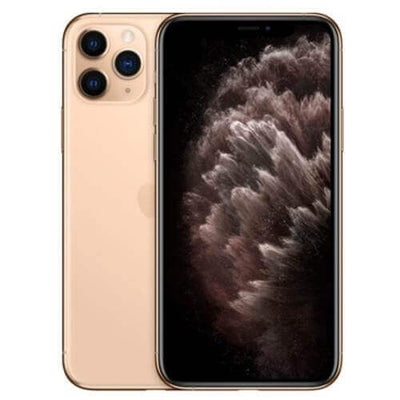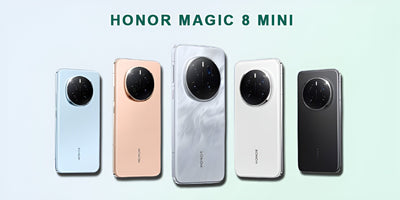Introduction
Google Phone, in its simplest definition, refers to a smartphone that is manufactured by Google. However, the concept of a Google Phone has evolved over the years. From 2010 to 2015, the Google Phone was known as the Nexus, a line of devices that showcased pure Android software. In 2016, Google transitioned from Nexus to Pixel, marking a shift towards more premium hardware and a closer integration of software and hardware. Today, the Pixel is the flagship Google Phone.
One of the key aspects that sets Google Phones apart is the emphasis on software. Google has always excelled in creating excellent software and services, and this is reflected in their smartphones. From the early days of the G1 to the latest Pixel devices, Google Phones have been known for their clean and intuitive user interface, regular software updates, and innovative features like the Google Assistant and HDR Plus photography.
The Early Years: G1 and Nexus One
In the early years of Google Phones, two devices stood out: the G1 and the Nexus One. These devices marked the beginning of Google's journey in the smartphone market and showcased some unique design features.
• Introduction of the G1 and its unique design features
The G1, manufactured by HTC, was the first Google Phone to hit the market. It had a distinct design, featuring a trackball, a dedicated camera button, and a sliding keyboard mechanism. These design elements set it apart from other phones of that time.
• Launch of the Nexus One and its flagship status
The Nexus One, also manufactured by HTC, was Google's flagship phone at the time. It boasted a powerful processor, a large display, and a high-resolution camera. The Nexus One introduced features like live wallpapers and multi-touch functionality, providing users with a unique Android experience.
• Focus on pure Android experience
Both the G1 and the Nexus One showcased the pure Android experience. Google Phones were known for their clean and intuitive user interface, regular software updates, and lack of bloatware. This emphasis on software made Google Phones stand out from other smartphones on the market.
• Influence of HTC in the early Google Phones
HTC played a significant role in the early Google Phones, manufacturing both the G1 and the Nexus One. Their collaboration with Google resulted in innovative designs and features that set these devices apart from their competitors.
Nexus Era: Nexus S, Galaxy Nexus, and Nexus 4
During the Nexus era, Google teamed up with Samsung to introduce a series of groundbreaking smartphones including the Nexus S, Galaxy Nexus, and Nexus 4, which left a lasting impact on the evolution of Google Phones. These devices were celebrated for their seamless integration of hardware and software, setting a new standard in the industry.
The Galaxy Nexus, in particular, brought notable advancements such as NFC (Near Field Communication) and a front-facing camera, elevating the user experience and laying the groundwork for future innovations in smartphone technology.
Yet, it was the Nexus 4 that truly stole the spotlight, captivating consumers with its elegant design and formidable performance. Its success underscored the significance of a pure Android experience, free from unnecessary bloatware and modifications.
Throughout the Nexus era, Google's emphasis on software and user experience shone through. By collaborating with various manufacturers and prioritizing stock Android, Google crafted devices that stood apart from the competition, resonating with users who valued simplicity and performance above all else.
Transition to Pixel: Nexus 5 and Nexus 6
With the introduction of Nexus 5, Google aimed to provide users with a refined Nexus experience. Manufactured by LG, the Nexus 5 featured a sleek design with a black and white color scheme, earning it the nickname "Phone Panda." While the hardware may not have been groundbreaking, the Nexus 5 excelled in its software offerings. It showcased the power of Google's stock Android, including the launch of the Google Now launcher, which integrated Google Assistant.
Following the success of the Nexus 5, Google released the Nexus 6 as its flagship device. Manufactured by Motorola, the Nexus 6 featured a massive 6-inch display and a powerful Snapdragon 805 processor. One of the standout features of the Nexus 6 was its camera, which was the first Google phone to come with HDR Plus. This feature allowed for enhanced dynamic range and improved low-light photography.
Despite these advancements, sales of the Nexus line began to decline. Google struggled to compete with the dominance of Apple and Samsung in the smartphone market. In 2016, Google made a significant shift by transitioning from Nexus to Pixel. The Pixel line marked a new era of premium hardware and a closer integration of software and hardware.
As the Nexus line was discontinued, the Pixel series took its place as the flagship Google Phone. The Pixel devices continued to prioritize software, with regular updates and innovative features like Google Assistant. While the Nexus line may be gone, its legacy lives on in the evolution of the Google Phone.
Pixel Era: Pixel and Pixel 2
In 2016, Google shook up the mobile world with its inaugural Google Phone, the Pixel, signaling a departure from the Nexus era. The Pixel, crafted entirely by Google, underscored their dedication to delivering a seamless blend of premium hardware and software. It quickly emerged as the quintessential flagship Google Phone, embodying the tech giant's vision.
A standout feature of the Pixel 2 was its groundbreaking camera prowess. Boasting a formidable 12.2-megapixel sensor coupled with cutting-edge image processing, the Pixel 2 garnered accolades from photography aficionados worldwide. Its HDR Plus functionality pushed the boundaries of dynamic range and low-light photography, setting an unparalleled benchmark for smartphone cameras.
The Pixel 2's triumph as a go-to device for photography enthusiasts further cemented the Pixel line's reputation as a frontrunner in delivering an unrivaled camera experience. Google's unwavering commitment to regular software updates and feature enhancements continued to captivate users, positioning the Pixel 2 as a formidable contender in the fiercely competitive smartphone arena.
The Pixel and Pixel 2 era represented a pivotal juncture in the evolution of the Google Phone. By prioritizing software excellence, seamless integration of Google services, and groundbreaking camera capabilities, the Pixel series etched its name as a trailblazer in the realm of smartphones.
Budget Pixel: Pixel 3A and Pixel 4A
Google introduced budget-friendly options in its Pixel lineup with the Pixel 3A and Pixel 4A. These devices catered to users looking for an affordable Google Phone without compromising on key features and software experience.
• Introduction of the budget-friendly Pixel 3A
The Pixel 3A was Google's first attempt at a budget Pixel device. Priced at $399, it offered a more affordable option for users who wanted the Google experience without the high price tag. The Pixel 3A featured a polycarbonate construction, a large OLED display, and the same powerful camera found in its flagship counterparts.
• Features and success of the Pixel 3A
The Pixel 3A received positive reviews for its exceptional camera performance, clean software experience, and long-lasting battery life. It proved to be a popular choice among consumers who wanted a reliable smartphone with a great camera at an affordable price.
• Disappointing features of the Pixel 4
The Pixel 4, released alongside the Pixel 3A, received mixed reviews. While it offered high-end specifications and a unique radar-based feature called Soli, it fell short in certain areas such as battery life and design. The Pixel 4 was considered a disappointment compared to its budget-friendly counterpart.
• Positive reception of the Pixel 4A as a budget option
Following the underwhelming response to the Pixel 4, Google introduced the Pixel 4A as a successor to the successful Pixel 3A. Priced at Dhs.1281.85, the Pixel 4A retained the same camera prowess, clean software experience, and excellent battery life of its predecessor. It quickly became a popular choice among budget-conscious consumers seeking a high-quality Google Phone.
The Future: Pixel 6 and Beyond
In the realm of smartphones, the arrival of the Pixel 6 marks a remarkable stride forward for Google's flagship device. This latest rendition showcases Google's distinctive approach, blending top-notch software with cutting-edge hardware seamlessly. Central to this upgrade is the introduction of the Tensor chip, a custom-designed powerhouse crafted by Google, promising enhanced processing capabilities and a host of software innovations.
Undoubtedly, one of the most impressive aspects of the Pixel 6 is its stellar camera system, building upon the solid foundation laid by its predecessors. Boasting an expansive sensor and harnessing Google's revolutionary computational photography techniques, the Pixel 6 delivers breathtaking photos and videos. Complementing this prowess is the device's high-resolution display, coupled with a high refresh rate, ensuring a captivating and fluid user experience.
In its bid to position the Pixel 6 as a true flagship contender, Google has spared no effort in its marketing endeavors. Emphasizing the device's Google-centric design and flagship features, the company has launched extensive marketing campaigns and forged strategic partnerships to garner attention and interest.
Looking ahead, it's reasonable to anticipate that Google will continue to iterate on the Pixel series, further cementing its foothold in the competitive smartphone landscape. From its humble beginnings in the Nexus era, the Pixel line has evolved into a premium choice for users seeking the quintessential Google experience. With its strong focus on software, seamless integration of Google services, and unparalleled camera capabilities, the Pixel series is poised to shape the future trajectory of smartphones.
Conclusion
In the journey from the early Nexus models to the present-day Pixel lineup, Google Phones have undergone a significant evolution. Initially, Google Phones were collaborations with various manufacturers, featuring stock Android software. However, the concept has matured into Google designing and manufacturing its own smartphones. Among these, the Pixel series stands out as the flagship Google Phone, renowned for its focus on software excellence, seamless integration with Google services, and cutting-edge camera technology.
Looking ahead, the imminent release of the Pixel 6 promises to further elevate Google's standing in the smartphone market. With the introduction of the Tensor chip, Google is poised to push the boundaries of hardware and software integration. Anticipated features of the Pixel 6 include an exceptional camera system, formidable processing capabilities, and a top-tier display.
Continued emphasis on software and integration will be pivotal to the success of Google Phones. The hallmark traits of a clean, user-friendly interface, timely software updates, and pioneering features like the Google Assistant have consistently set Google Phones apart from the competition. As Google persists in advancing its hardware and software offerings, the trajectory of Google Phones appears bright and promising.
FAQ
1. What is the difference between Nexus and Pixel?
The main difference between Nexus and Pixel is that Nexus phones were manufactured by various companies with stock Android software, while Pixel phones are designed and built by Google itself. The transition from Nexus to Pixel marked a shift towards more premium hardware and a closer integration of software and hardware.
2. Why did Google transition from Nexus to Pixel?
Google transitioned from Nexus to Pixel to have more control over the design and manufacturing process, allowing them to create a more cohesive and premium product. This shift also allowed Google to showcase their own hardware and software innovations.
3. What makes a Google Phone unique?
Google Phones are known for their clean and intuitive user interface, regular software updates, and innovative features like the Google Assistant and HDR Plus photography. They also prioritize software and the integration of Google services, providing a seamless and cohesive user experience.
4. Are Pixel phones considered flagship devices?
Yes, Pixel phones are considered flagship devices. They offer high-end specifications, advanced camera capabilities, and a premium user experience. The Pixel line represents Google's best and most advanced smartphones.




















